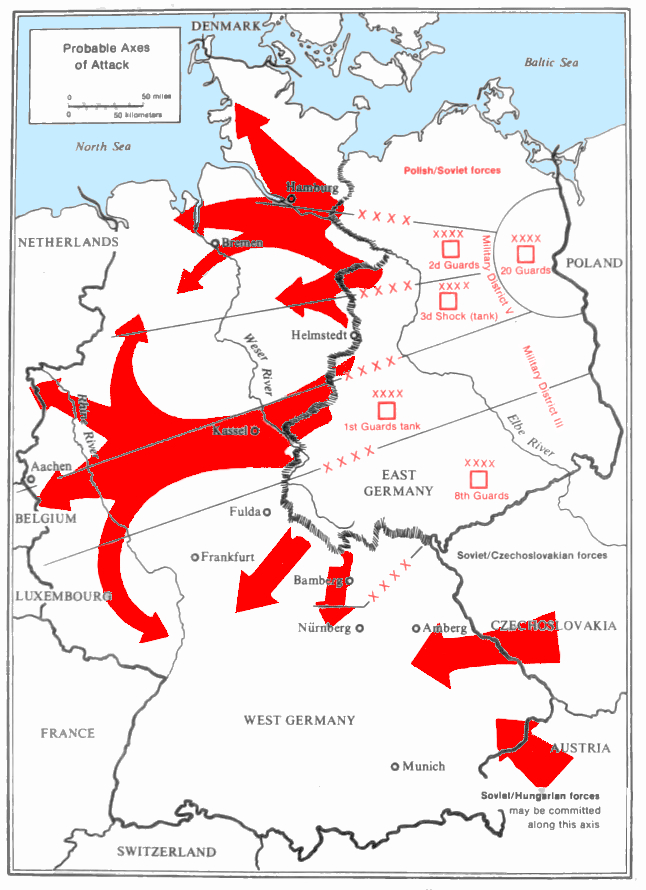|
Kiehnmoor
The Kiehnmoor is a nature reserve in Germany. It was designated as a nature reserve in 1992. It has an area of of which lie in Celle district and in Uelzen district. The nature conservation authorities of these districts are responsible for the reserve. A large part of the area is wet meadow, that in places is intensively farmed. However the majority of the area has been left in its natural state. A small sand heath forms part of the reserve. Its southern perimeter borders immediately on the larger heathland area of the Südheide Nature Park. The ''Heidschnucken'', moorland sheep characteristic of the region, are reared here. North of the Kiehnmoor and immediately adjacent to it is the valley of a partially dammed stream, the ''Gerdau'', and the Brambosteler Moor nature reserve. To the southeast the reserve borders on the Unterlüß Firing Range (''Schießplatz Unterlüß''), belonging to the firm of Rheinmetall, and the ''Große Heide'' ("Large Heath") near Unterlüß, that is cl ... [...More Info...] [...Related Items...] OR: [Wikipedia] [Google] [Baidu] |
Nature Reserves In Lower Saxony
There are 764 nature reserves in the state of Lower Saxony in north Germany, covering a total area of as at 31 December 2008. These reserves currently form about 4.72% of the land area in the state, including the coastal waters out to . In addition, there are two national parks and one biosphere reserve that are also under strict protection and which raise the area coverage to 11.32%.http://www.nlwkn.niedersachsen.de/master/C8380003_N5512608_L20_D0_I5231158.html Accessed on 16.09.2009 The table below shows a selection of these reserves. Where a nature reserve extends over several rural (''Landkreise'') or urban districts (''Kreisfreie Städte'') these are given in order of the size area covered. By sorting on the column "Rural/Urban District" the reserves that are found wholly or partially within a district can be seen at a glance. In order to locate the other areas, use the search function of your computer keyboard (''CTRL'' / ''Ctrl'' + ''F''). The NSG Nos. (i.e. nature reser ... [...More Info...] [...Related Items...] OR: [Wikipedia] [Google] [Baidu] |
Munster Training Area
Munster Training Area (German: ''Truppenübungsplatz Munster'') is a military training area in Germany on the Lüneburg Heath. It comprises two separate areas with different purposes: Munster North (''Munster-Nord'') (size: ) and Munster South (''Munster-Süd'') (size: ). The two areas are separated geographically by the town of Munster and several barracks. When the military training area was established a camp or ''Lager'' was built about from the town centre which became known as Munsterlager. Between Munster North and South there is a road corridor to the nearby training area of Bergen-Hohne over which exercising troops can transfer from one area to the other. There are many rare and endangered plant species on this terrain today that thrive in the environment created by the training area. Munster South Training Area In 1891 the Prussian Ministry of War began to buy up areas of heath and marsh between Munster, Reiningen and Wietzendorf and to lay out a military train ... [...More Info...] [...Related Items...] OR: [Wikipedia] [Google] [Baidu] |
Bogs Of Lower Saxony
A bog or bogland is a wetland that accumulates peat as a deposit of dead plant materials often mosses, typically sphagnum moss. It is one of the four main types of wetlands. Other names for bogs include mire, mosses, quagmire, and muskeg; alkaline mires are called fens. A baygall is another type of bog found in the forest of the Gulf Coast states in the United States.Watson, Geraldine Ellis (2000) ''Big Thicket Plant Ecology: An Introduction'', Third Edition (Temple Big Thicket Series #5). University of North Texas Press. Denton, Texas. 152 pp. Texas Parks and Wildlife. Ecological Mapping systems of Texas: West Gulf Coastal Plain Seepage Swamp and Baygall'. Retrieved 7 July 2020 They are often covered in heath or heather shrubs rooted in the sphagnum moss and peat. The gradual accumulation of decayed plant material in a bog functions as a carbon sink. Bogs occur where the water at the ground surface is acidic and low in nutrients. In contrast to fens, they derive most of th ... [...More Info...] [...Related Items...] OR: [Wikipedia] [Google] [Baidu] |
North German Plain
The North German Plain or Northern Lowland (german: Norddeutsches Tiefland) is one of the major geographical regions of Germany. It is the German part of the North European Plain. The region is bounded by the coasts of the North Sea and the Baltic Sea to the north, Germany's Central Uplands (''die Mittelgebirge'') to the south, by the Netherlands to the west and Poland to the east. In the west, the southern boundary of the North German Plain is formed by the Lower Saxon Hills: specifically the ridge of the Teutoburg Forest, the Wiehen Hills, the Weser Hills and the Lower Saxon Börde, which partly separate it from that area of the Plain known as the Westphalian Lowland. Elements of the Rhenish Massif also act a part of the southern boundary of the plain: the Eifel, Bergisches Land and the Sauerland. In the east the North German Plain spreads out beyond the Harz Mountains and Kyffhäuser further to the south as far as the Central Saxon hill country and the foothills of the Ore M ... [...More Info...] [...Related Items...] OR: [Wikipedia] [Google] [Baidu] |
Lüneburg Heath
Lüneburg Heath (german: Lüneburger Heide) is a large area of heath, geest, and woodland in the northeastern part of the state of Lower Saxony in northern Germany. It forms part of the hinterland for the cities of Hamburg, Hanover and Bremen and is named after the town of Lüneburg. Most of the area is a nature reserve. Northern Low Saxon is still widely spoken in the region. Lüneburg Heath has extensive areas, and the most yellow of heathland, typical of those that covered most of the North German countryside until about 1800, but which have almost completely disappeared in other areas. The heaths were formed after the Neolithic period by overgrazing of the once widespread forests on the poor sandy soils of the geest, as this slightly hilly and sandy terrain in northern Europe is called. Lüneburg Heath is therefore a historic cultural landscape. The remaining areas of heath are kept clear mainly through grazing, especially by a North German breed of moorland sheep called th ... [...More Info...] [...Related Items...] OR: [Wikipedia] [Google] [Baidu] |
Meißendorf Lakes
Meißendorf is a village and ''Ortschaft'' (municipal division) of the municipality of Winsen an der Aller in the Lower Saxon district of Celle in northern Germany. December 2020. It lies northwest of Winsen an der Aller. It derives its name from the river which flows through the village. 1,666 people have their main residence in Meißendorf and 224 have a second home here. There is also a campsite with about 100 permanent pitches and a mobile home site. The Lower Saxony Nature Conservation Society runs a nature conservation centre on the Sunder Estate (''Gut Sunder'') with 600 participant ... [...More Info...] [...Related Items...] OR: [Wikipedia] [Google] [Baidu] |
Ostenholz Moor
Ostenholz Moor (German: ''Ostenholzer Moor'') is a raised bog on the Lüneburg Heath in the German state of Lower Saxony. It is named after the village of Ostenholz and is not far from Meißendorf. The bog is almost entirely within the Bergen-Hohne Military Training Area and, as a result, has been largely left to develop naturally. The River Meiße separates Ostenholz Moor from the nature and bird reserve of the '' Meißendorf Lakes and Bannetzer Moor''. The bog's landscape largely forms a natural boundary for the actual nature reserve which has been purchased by Celle district. The Meißendorf Lakes, formerly a network of ponds for fish-farming, are today the most important migration and breeding ground for numerous marsh and water birds. Around 250 species of bird may be seen here, including the crane, the black stork and the osprey The osprey (''Pandion haliaetus''), , also called sea hawk, river hawk, and fish hawk, is a diurnal, fish-eating bird of prey w ... [...More Info...] [...Related Items...] OR: [Wikipedia] [Google] [Baidu] |
Sittensen
Sittensen is a municipality in the district of Rotenburg, in Lower Saxony, Germany. It is situated approximately 20 km northeast of Rotenburg, and 45 km southwest of Hamburg. Sittensen belonged - as to its government - to the Prince-Archbishopric of Bremen, established in 1180.Michael Schütz, „Die Konsolidierung des Erzstiftes unter Johann Rode“, in: ''Geschichte des Landes zwischen Elbe und Weser'': 3 vols., Hans-Eckhard Dannenberg and Heinz-Joachim Schulze (eds.) on behalf of the Landschaftsverband der ehemaligen Herzogtümer Bremen und Verden, Stade: Landschaftsverband der ehemaligen Herzogtümer Bremen und Verden, 1995 and 2008, vol. I 'Vor- und Frühgeschichte' (1995; ), vol. II 'Mittelalter (einschl. Kunstgeschichte)' (1995; ), vol. III 'Neuzeit' (2008; ), (=Schriftenreihe des Landschaftsverbandes der ehemaligen Herzogtümer Bremen und Verden; vols. 7–9), vol. II: pp. 263–278, here pp. 270seq. . In religious respect, however, Sittensen formed part of the R ... [...More Info...] [...Related Items...] OR: [Wikipedia] [Google] [Baidu] |
Bergen-Hohne Training Area
Bergen-Hohne Training Area (German: ''NATO-Truppenübungsplatz Bergen'' or ''Schießplatz Bergen-Hohne'') is a NATO military training area in the southern part of the Lüneburg Heath, in the state of Lower Saxony in northern Germany. It covers an area of , which makes it the largest military training area in Germany. It was established by the German armed forces, the ''Wehrmacht'', in 1935. At the end of the Second World War it was taken over by British occupying forces and some of its facilities used as a liberation camp for survivors of the Bergen-Belsen concentration camp, which was located on the edge of the training area near the town of Bergen. Under British control, the training area was steadily expanded and, since the 1960s, has also been used by the German Armed Forces (''Bundeswehr'') and other NATO troops. Geography Location Bergen-Hohne Training Area is situated on both sides of the boundary between the districts of Heidekreis (formerly ''Soltau-Fallingbostel' ... [...More Info...] [...Related Items...] OR: [Wikipedia] [Google] [Baidu] |
Black Grouse
The black grouse (''Lyrurus tetrix''), also known as northern black grouse, Eurasian black grouse, blackgame or blackcock, is a large game bird in the grouse family. It is a sedentary species, spanning across the Palearctic in moorland and steppe habitat when breeding, often near wooded areas. They will spend the winter perched in dense forests, feeding almost exclusively on the needles of conifers. The black grouse is one of 2 species of grouse in the genus '' Lyrurus'', the other being the lesser-known Caucasian grouse. The female is greyish-brown and has a cackling or warbling call. She takes all responsibility for nesting and caring for the chicks, as typical with most galliforms. The black grouse's genome was sequenced in 2014. Taxonomy and naming The black grouse was formally described by the Swedish naturalist Carl Linnaeus in 1758 in the tenth edition of his ''Systema Naturae'' under the binomial name ''Tetrao tetrix''. Both ''Tetrao'' and ''tetrix'' come from Ancie ... [...More Info...] [...Related Items...] OR: [Wikipedia] [Google] [Baidu] |





